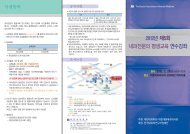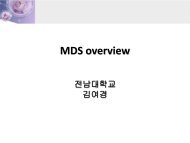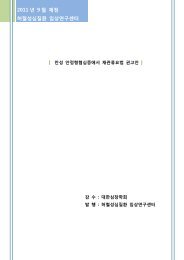Clinical
Clinical
Clinical
You also want an ePaper? Increase the reach of your titles
YUMPU automatically turns print PDFs into web optimized ePapers that Google loves.
Abstract<br />
THE ENDOCRINE SOCIETY’S CLINICAL GUIDELINES<br />
Objective: The objective was to provide guidelines for<br />
the evaluation and treatment of androgen deficiency<br />
syndromes in adult men.<br />
Participants: The Task Force was composed of a chair,<br />
selected by the <strong>Clinical</strong> Guidelines Subcommittee of<br />
The Endocrine Society, five additional experts, a<br />
methodologist, and a professional writer. The Task<br />
Force received no corporate funding or remuneration.<br />
Evidence: The Task Force used systematic reviews of<br />
available evidence to inform its key recommendations.<br />
The Task Force used consistent language and graphical<br />
descriptions of both the strength of recommendation<br />
and the quality of evidence, using the recommendations<br />
of the Grading of Recommendations, Assessment,<br />
Development, and Evaluation group.<br />
Consensus Process: Consensus was guided by<br />
systematic reviews of evidence and discussions during<br />
three group meetings, several conference calls, and<br />
e-mail communications. The drafts prepared by the<br />
panelists with the help of a professional writer were<br />
reviewed successively by The Endocrine Society’s<br />
<strong>Clinical</strong> Guidelines Subcommittee, <strong>Clinical</strong> Affairs<br />
Committee, and Council. The version approved by the<br />
Council was placed on The Endocrine Society’s Web<br />
site for comments by members. At each stage of review,<br />
the Task Force received written comments and<br />
incorporated needed changes.<br />
Conclusions: We recommend making a diagnosis of<br />
androgen deficiency only in men with consistent<br />
symptoms and signs and unequivocally low serum<br />
testosterone levels. We suggest the measurement of<br />
morning total testosterone level by a reliable assay as<br />
the initial diagnostic test. We recommend confirmation<br />
of the diagnosis by repeating the measurement of<br />
morning total testosterone and in some patients by<br />
measurement of free or bioavailable testosterone level,<br />
using accurate assays. We recommend testosterone<br />
therapy for symptomatic men with androgen deficiency,<br />
who have low testosterone levels, to induce and<br />
maintain secondary sex characteristics and to improve<br />
their sexual function, sense of well-being, muscle mass<br />
and strength, and bone mineral density. We recommend<br />
against starting testosterone therapy in patients with<br />
breast or prostate cancer, a palpable prostate nodule or<br />
induration, or prostate-specific antigen greater than<br />
3 ng/mL without further urological evaluation,<br />
erythrocytosis (hematocrit > 50%), hyperviscosity,<br />
untreated obstructive sleep apnea, severe lower urinary<br />
tract symptoms with International Prostate Symptom<br />
Score (IPSS) greater than 19, or class III or IV heart<br />
failure. When testosterone therapy is instituted, we<br />
suggest aiming at achieving testosterone levels during<br />
treatment in the mid-normal range with any of the<br />
approved formulations, chosen on the basis of the<br />
patient’s preference, consideration of pharmacokinetics,<br />
treatment burden, and cost. Men receiving testosterone<br />
therapy should be monitored using a standardized plan.<br />
(J Clin Endocrinol Metab 91: 1995–2010, 2006)<br />
2

















